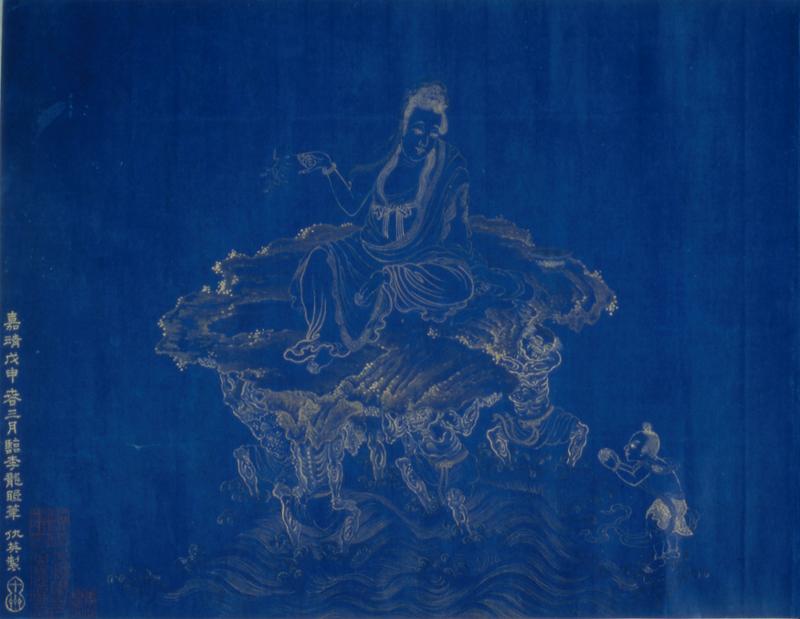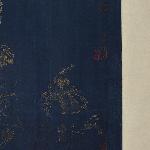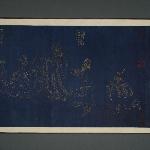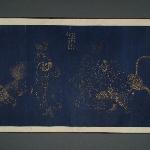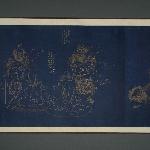The Luohans, or The Eighteen Luohan
C450
From: China
Curatorial Section: Asian
| Object Title | The Luohans, or The Eighteen Luohan |
| Object Number | C450 |
| Current Location | Collections Storage |
| Culture | Chinese | Buddhist | Chan Buddhist |
| Provenience | China |
| Creator | Qiu Ying | Style of Li Gonglin |
| Period | Ming Dynasty |
| Date Made | 1545 |
| Section | Asian |
| Materials | Paper | Pigment |
| Technique | Painted |
| Iconography | Eighteen Luohans | Luohan | Guanyin | Elephant | Dragon | Lion | Tiger | Demon |
| Inscription Language | Chinese Language |
| Description | Scroll painting attributed to Qiu Ying 仇英 (1494 - 1552 CE) in the style of Li Gonglin 李公麟 (1049 - 1106 CE). The subject of the "Eighteen Luohan" (Sanskrit: arhat), the Buddha's disciples who attained enlightenment through their own efforts, was a favorite theme in Chinese legend and painting. This painting's silver and gold lines on a dark blue ground, a trait of Chinese and Japanese Buddhist painting from the 8th century CE onward, create a sumptuous yet sublime effect. In China scarcely any paintings of this style remain; this is one of the few known existing pieces. Generally two schools, literati and court artisan, dominated the painting of pre-modern China. The literati painters preferred untrammeled, expressive brush strokes, while the professional court artisans usually paid meticulous attention to detail. Though a professional painter, Qiu was well acquainted with the literati and was active in their circles in Suzhou where he lived. The blending of these two traditions is apparent in this beautiful work. Each Luohan is paired with a poem whose content is a montage of vague terms coupled with fleeting images. These poems suggest influence from the tradition of Chan (Zen) Buddhism. |
| Length | 228.6 cm |
| Credit Line | Purchased from Worch of Paris, 1925 |
| Other Number | Getz 44 - Other Number |
Report problems and issues to digitalmedia@pennmuseum.org.


